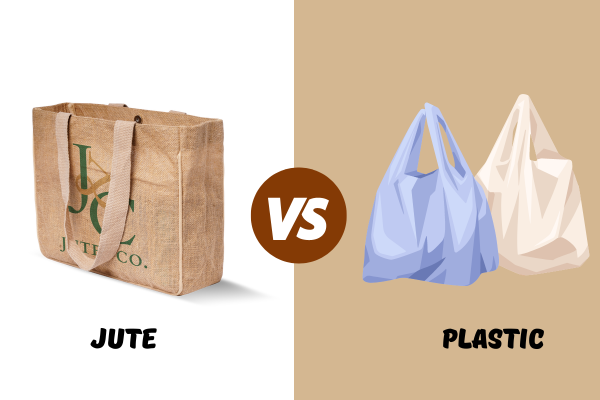In today's fast-paced world, sustainability and environmental consciousness have become crucial factors in decision-making, from individuals to large corporations. One particular area where this awareness is gaining momentum is in the choice of materials for various products and applications. This article will provide a detailed comparative analysis of two commonly used materials, jute, and plastic, focusing on their environmental impact.
The Rise of Jute
Jute,a natural vegetable fiber that is primarily grown in the Indian subcontinent and some other regions of the world. It has been utilized for centuries to create a wide range of products, including textiles, bags, and even home furnishings. Its resurgence in popularity can be attributed to its numerous environmentally friendly attributes.
The Dominance of Plastic
Plastic, on the other hand, has become an integral part of our lives, thanks to its versatility and durability. However, its omnipresence has raised serious environmental concerns, as it is a major contributor to pollution and takes hundreds of years to decompose fully.
Lifecycle Analysis of Jute and Plastic:
| S.N | Headings | Jute | Plastic |
|---|---|---|---|
| 1. | Raw Material Sourcing | The cultivation of jute requires minimal use of pesticides and fertilizers. It is predominantly rain-fed and doesn't compete with food crops for arable land. | The production of plastic heavily relies on petrochemicals, leading to the extraction of fossil fuels, a process that is environmentally harmful. |
| 2. | Manufacturing Process | Jute products are manufactured using relatively eco-friendly processes, with minimal chemical usage. | The production of plastic involves the emission of greenhouse gases and other pollutants, contributing to global warming |
| 3. | Product Durability | Jute products are biodegradable and have a limited lifespan, reducing long-term environmental impact | Plastic products are durable but can take hundreds of years to decompose, posing a severe environmental threat. |
| 4. | Utilization and Disposal | Jute bags and textiles are reusable and often considered fashionable, contributing to a reduction in single-use plastics. | Single-use plastic items, such as shopping bags, have a short lifespan and are often discarded after a single use. |
| 5. | Recycling and Disposal | Jute products can be composted and returned to the earth without harming the environment | Plastic recycling rates are low, and the majority of plastic waste ends up in landfills or the ocean, causing severe pollution. |
| 6. | Environmental Impact Assessment | The jute industry has a minimal impact on air and water pollution. | Plastic manufacturing and disposal contribute significantly to pollution, affecting ecosystems and wildlife. |
| 7. | Carbon Footprint | Jute has a lower carbon footprint due to its sustainable cultivation and manufacturing processes. | Plastic has a high carbon footprint, primarily due to the energy-intensive production of petrochemicals |
| 8. | Global Initiatives | Jute is gaining prominence in global sustainable initiatives, leading to increased demand. | Global efforts to reduce plastic usage and promote recycling are ongoing but face significant challenges. |
Conclusion
In the battle of Jute vs. Plastic, it is evident that jute emerges as the more environmentally friendly choice. Its natural origin, sustainable cultivation, and biodegradability make it a promising alternative to the enduring environmental concerns posed by plastic. By choosing jute over plastic in our daily lives, we can collectively contribute to a greener and more sustainable future.
Frequently Asked Questions
-
Is jute more expensive than plastic?
No, jute is often competitively priced, making it a cost-effective alternative to plastic.
-
Are jute products as durable as plastic ones?
Jute products are durable but biodegradable, which means they have a limited lifespan compared to plastic.
-
Can plastic be completely replaced by jute in all applications?
While jute can replace plastic in many applications, some specialized uses of plastic may not have suitable jute alternatives.
-
How can I contribute to reducing plastic usage in my daily life?
You can reduce plastic usage by opting for jute bags, reusable containers, and supporting recycling initiatives.
-
Are there any emerging materials that are more environmentally friendly than jute and plastic?
Researchers are continually exploring alternative materials, such as hemp, to further reduce the environmental impact of various products.
